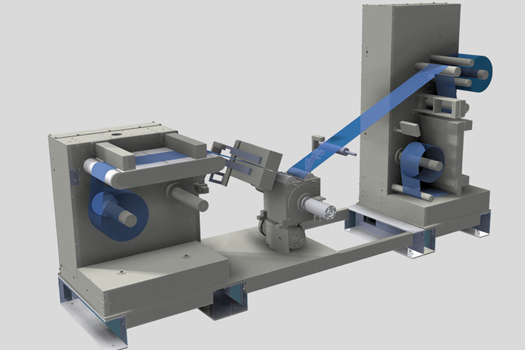
Atomic Layer Deposition for functional films

Our advanced S-ALD plant (Spatial Atomic Layer Deposition plant) enables flexible substrates to be coated with high-quality layers in a roll-to-roll process. The layers are deposited on the substrate surface by physical-chemical processes in so-called cycles. Each cycle deposits just an atomic or molecular layer, leading to excellent layer quality. The layer thickness can be set extremely accurately by the number of cycles. In contrast to other methods, the ALD process also enables 3-D surface structures to be uniformly covered with contour accuracy at the nanometer level. Some materials can be deposited at only ca. 60°C, enabling the coating of temperature-sensitive substrates. As the process operates at atmospheric pressure, integration into roll-to-roll production lines is relatively easy. Functional films can thus be produced which are also suitable for the encapsulation of organic electronics.
We offer customers the following services with our ALD plant:
- An effective and large-area functionalization of polymeric surfaces at the nanoscale level
- Coating trials on your substrates
- Assistance with the development of new ALD material systems and layer structures in roll-to-roll processes
- Access to our extensive knowledge of ALD processes and ALD plant technology
- Extensive in-house methods for materials' characterization
Atomic Layer Deposition (ALD) Process
- Chemical reaction at the surface
- Layer deposition in a cyclic process
- One cycle corresponds to the thickness of an atom
Applications for Spatial Atomic Layer Deposition
- Ultra-barrier films, functional films
- Encapsulation of flexible electronic components e.g. OLEDs, solar cells, sensors
- Functional coatings for organic electronics e.g. OLEDs, OPV systems, touch screens
- Films with antimicrobial surfaces
- Anti-corrosion coatings on metal foils
Advantages of Spatial Atomic Layer Deposition
- Precise control of the layer thickness
- Defined layer composition
- Higher layer quality
- Closed, pore-free layers
- Low material usage
- Continous process under atmospheric pressure
 Fraunhofer Institute for Process Engineering and Packaging IVV
Fraunhofer Institute for Process Engineering and Packaging IVV